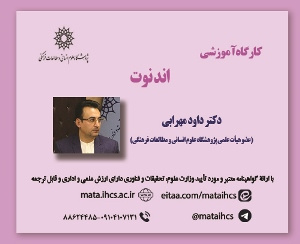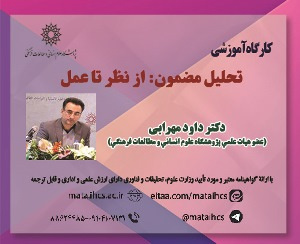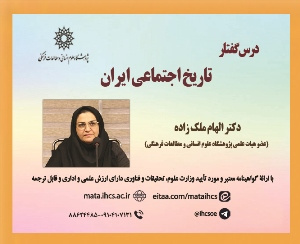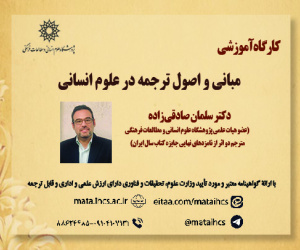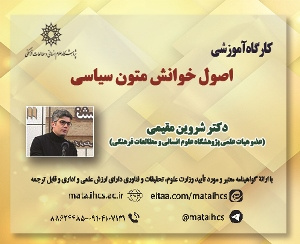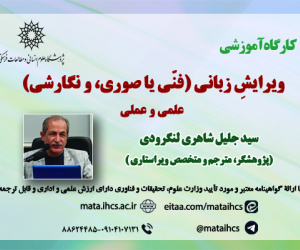تحلیل رابطه کاربری زمین و رفتار سفر در سطح محلات شهرتهران؛ نمونه مورد مطالعه: محله منیریه، کوی بیمه و کوی گلستان (مقاله علمی وزارت علوم)
درجه علمی: نشریه علمی (وزارت علوم)
آرشیو
چکیده
بالابودن فراوانی مد سفر اتومبیل شخصی و افزایش روزافزون ترافیک در پایتخت ایران، مشکلاتی است که کلانشهر تهران با آن مواجه است. مقاله حاضر با هدف یافتن شاخص های کاربری زمین موثر جهت کاهش فراوانی سفر با اتومبیل شخصی و افزایش فراوانی دیگر مدهای سفر (پیاده و حمل ونقل عمومی)، در پی پاسخ به دو سوال است: آیا تفاوت در الگوی توسعه ای محلات، موجب تفاوت در رفتارسفر می شود، آیا شاخص های گوناگون کاربری زمین، با مد نظر قراردادن تفاوت های جمعیتی- اقتصادی، ترجیحات و نگرش های سفر بر رفتارسفر تاثیر می گذارند؟ مقاله حاضر با روش تحلیلی و اکتشافی، با استفاده از تحلیل عاملی و با تدوین چهار مدل و تحلیل رگرسیونی، تاثیرات معیارهای مطروحه را بر فراوانی سفر به تفکیک مدهای سفر، مورد سنجش قرار داده است. نتایج حاکی از آن است که رفتارسفر و عوامل موثر بر آن در محلات گوناگون، متفاوت است. از سوی دیگر، با وجود آنکه شاخص های تعداد اتومبیل شخصی (شاخص جمعیتی- اقتصادی) و وابستگی به اتومبیل شخصی (شاخص نگرش ها و عادات سفر)، بر رفتارسفر تاثیر به سزایی داشتند، شاخص های کاربری زمین از قبیل عوامل دسترسی به سیستم حمل ونقل عمومی، تنوع کاربری ها و قابلیت دسترسی به مقاصد غیرکاری بر رفتارسفر نیز تاثیرگذار بودند.Analyzing the relationship between land use and travel behavior in Bime, Moniriye and Golestan districts
In recent decades, the question how we could reduce the frequency of auto mode and increase frequency of the other modes- walk and transit- is a challenged for urban planners. Many planning researchers and practitioners believe that individuals rely on automobiles partly to travel from place to place because land uses are separated and spread out. By contrast, when certain design features such as higher development densities and continuous sidewalks are combined with the mixed land uses, many expect residents of these communities to drive less and walk and bike more, on average. Tehran has been blamed for high levels of automobile travel and Traffic congestion, high travel time. So the primary purpose of this study was to investigate how relative associations between travel behavior and land use patterns where people live and non-work destination impact modal choice and frequency of travel modes in three different development patterns in Tehran. In fact this study wants to answer two questions: 1) whether patterns of travel behavior to non work destinations at neighborhood level are different? And a key question which is largely unanswered: 2) whether patterns of land development of neighborhoods affect travel behavior of residents? And particularly, whether pattern of neighborhood land development influences travel behavior or whether travel attitudes and preferences and socio-demographic characteristics influence travel behavior? In other words, whether differences in the built environment are associated with differences in travel behavior, after accounting for socio-demographic characteristics and for attitudes and preferences? More specifically, environments where residents are closer to destinations and have viable alternatives to driving are in fact associated with less driving. Here factor analysis, linear regression analysis are used to investigate the relationship between neighborhood characteristics and travel behavior while taking into account the role of travel preferences and neighborhood preferences in explaining this relationship. This study explored the relationship between the residential environment and non work travel frequencies by auto, transit, and walk/bicycle modes. In fact, a multivariate analysis of cross sectional data in three different land development patterns of neighborhoods of Tehran-Monirye, Koye-Bime and Koye-Golestan shows that there are differences in travel behavior between neighborhoods. Koye-Golestan (as a car-oriented neighborhood) largely is influenced by attitudes in contrast to Koye-Bime (as a conventional neighborhood), and Monirye (as a traditional neighborhood) land use characteristics are mostly affect on travel behavior. In general, however the number of autos that residents have as a socio-demographic characteristics and auto pro-travel attitude as a travel behavior attitude index largely influence on travel behavior, distance to transit, land use diversity as well as destination accessibility as land use index significantly influenced frequency by travel modes to non work destinations in neighborhoods. Taken together, our results suggest that if cities use land use policies to offer options to drive less and use transit and non-motorized modes more, many residents will tend to do so.
